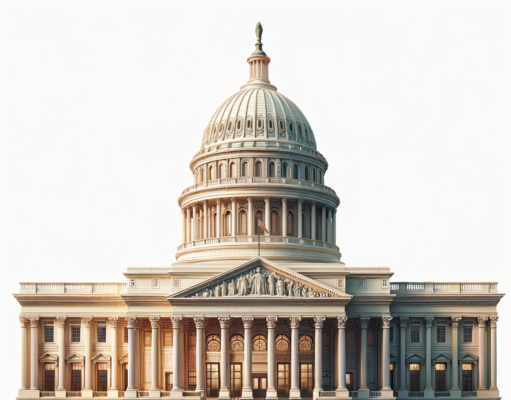
Disclaimer:
Due to the fact that individual state
laws are constantly subject to change, individuals are encouraged to consult an attorney prior to engaging in any activity, action, or event in which the expressed legality may come into question. Furthermore, individuals interested in attaining information with regard to individual state legislature are also encouraged to perform independent research in order to substantiate the relevancy and current state(s) of specific legislation.
Connecticut Abortion Laws
Within the state of Connecticut, Abortion is defined as the purposeful termination of a pregnancy through procedural means. Subsequent to the decision of Roe v. Wade, abortion became legal within the United States – however, Connecticut state legislation expresses a variety of stipulations with regard to a legal abortion process:
• A legal abortion may occur in the event that the protection and preservation of the life of the mother carrying a fetus is compromised as a result of a pregnancy; an abortion can take place in order to save the life of the mother only upon accredited and sanctioned medical review – only a licensed medical doctor will be permitted to both review and perform cases of abortion within the state of Connecticut
• An illegal abortion is deemed as an abortion process that occurs in the event that the health and wellbeing of the mother is not in danger; furthermore, an illegal abortion is defined as a procedure that occurs outside of legal, accepted, and authorized medical procedural protocol – in the state of Connecticut, public funds may be used for abortions only in the case(s) of sexual assault and incest
• In Connecticut, the statutory definition of a legal adoption is delivered when the pregnant woman decides to terminate pregnancy before viability-after viability, only to preserve life or the health of the woman
Connecticut Marijuana Laws
• Possession: Under 4 oz.: 1 yr. and/or $1,000; Over 4 oz.: 5 yrs. And/or $2000; over 1 kilo: 5-20 yrs. to life; Subsequent offense: Under 4 oz.: 5 yrs. and/or $3000; Over 4 oz.: 10 yrs. and/or $5000; add 2 yrs. if within 1500 ft. of school or child care facility
• Sale: Over 1 kilo: 5-20 yrs.; Subsequent offense: 10-25 yrs.; If sale within 1500 ft. of school or child day care center: additional mandatory 3 yrs.; Sale to minor or person 2 yrs. junior: additional mandatory 2 yrs.: court may suspend mandatory minimum sentence if person is under 18 or lacks mental capacity.
Connecticut DWI and DUI Laws
Driving while intoxicated (DWI) and driving while under the influence (DUI) charges exist in the event that an individual ingests illegal drugs, alcohol, or controlled-substances, which may impair their respective ability to safely operate a motor vehicle; the following DUI and DWI laws exist within the state of Connecticut:
• Zero tolerance laws exist in the event that an individual below the legal age permissible to consume alcohol is suspected to be unlawfully operating a motor vehicle; within the state of Connecticut, the Zero Tolerance Blood Alcohol Content Level (BAC) cannot exceed .02%
• The BAC limit for individuals operating motor vehicles may not reach .08%; this can constitute a DUI or DWI offense
• In Connecticut, there currently exist no supplementary penalties incurred due to BAC levels exceeding the expressed, legal limit
• Implied consent is a legal instrument that is employed within the realm of a DUI Arrest that entails a verbal or written contract resulting from the willing participation in a regulated activity, such as the operation of a motor vehicle; within Connecticut, law enforcement agents are permitted to act in accordance with implied consent laws
• Upon a DUI or DWI conviction, and individuals is subject to undergo the loss of driving privileges for a period of no less than 90 days’ time; penalties can range upwards of 1 year in addition to the installation of an ignition interlock device
• State Permit to purchase is required for handguns, but not for long guns.
• Connecticut upholds the assault weapons law.
• Owner license is not required for either
form of gun.
• Carry permit is issued for handguns, but not for long guns.
Connecticut Adoption Laws
• Any person (except between persons over age of maturity, there must be written consent of spouses id any of adopted person) may adopt
• Age that Child’s consent is needed: 12 years and older
• Married persons must join in adoption unless court finds sufficient reason for non-joinder; sexual orientation of prospective parents may be considered.
• The Children and Youth Services Department/Probate Court administers adoption in Connecticut.
• Within the state of Connecticut, the minimum wage is 5 dollars and 15 cents awarded per hour of labor
• State Holidays are listed as: New Year's Day, Memorial Day, Independence Day, Labor Day, Thanksgiving, and Christmas – Veteran’s Day, Wyoming Equality Day, Martin Luther King, Jr.'s Birthday, and President’s Day result in the closing of public institutions only upon the decision set forth by the local board of trustees and government
• Within the state of Connecticut, an individual’s employ cannot be terminated in the event that they report a violation or hazard taking place with regard to their respective employment – or place of employment
Connecticut Death Penalty Laws
Within the state of Connecticut, Capital Punishment – or the Death Penalty – is legal; however, additional stipulations exist with regard to this procedure:
• Capital punishment is authorized in Connecticut for capital felonies
• Minimum age is 18
• No other crime may warrant capital punishment except for Homicide
• Lethal injection is the method of execution.
Connecticut Gambling Laws
• Wagering on horse racing is permitted
• Wagering on dog racing is permitted.
Casinos on Pequot and Mohegan reservations are permitted.Name
State-laws.laws.com
[$]
Disclaimer:
Due to the fact that individual state laws are constantly subject to change, individuals are encouraged to consult an attorney prior to engaging in any activity, action, or event in which the expressed legality may come into question. Furthermore, individuals interested in attaining information with regard to individual state legislature are also encouraged to perform independent research in order to substantiate the relevancy and current state(s) of specific legislation.
$ Abortion Laws
Within the state of $, Abortion is defined as the purposeful termination of a pregnancy through procedural means. Subsequent to the decision of Roe v. Wade, abortion became legal within the United States – however, $ state legislation expresses a variety of stipulations with regard to a legal abortion process:
• A legal abortion may occur in the event that the protection and preservation of the life of the mother carrying a fetus is compromised as a result of a pregnancy; an abortion can take place in order to save the life of the mother only upon accredited and sanctioned medical review – only a licensed medical doctor will be permitted to both review and perform cases of abortion within the state of $
• An illegal abortion is deemed as an abortion process that occurs in the event that the health and wellbeing of the mother is not in danger; furthermore, an illegal abortion is defined as a procedure that occurs outside of legal, accepted, and authorized medical procedural protocol – in the state of $, public funds may be used for abortions only in the case(s) of sexual assault and incest
$ Marijuana Laws
Within the state of $, the possession of Marijuana – or Cannabis products – as well as the acts of growing or distributing marijuana without the expressed permission of the $ State Government is a punishable, criminal offense. The following penalties are associated with Marijuana within the state of $:
Possession/Under the Influence of Marijuana
1. 3 ounces or less
• Penalty:
• Fines:
• Classification:
2. 3 ounces or more
• Penalty:
• Fines:
• Classification:
Cultivation or Growing of Marijuana
1. Amount:
• Penalty:
• Fines:
• Classification:
Sale of Marijuana
1. Amount:
• Penalty:
• Fines:
• Classification:
• Supplementary Charges:
Medical Marijuana
Within the state of $, Medical Marijuana is considered to be illegal both for patient use and cultivation
$ DWI and DUI Laws
Driving while intoxicated (DWI) and driving while under the influence (DUI) charges exist in the event that an individual ingests illegal drugs, alcohol, or controlled-substances, which may impair their respective ability to safely operate a motor vehicle; the following DUI and DWI laws exist within the state of $:
• Zero tolerance laws exist in the event that an individual below the legal age permissible to consume alcohol is suspected to be unlawfully operating a motor vehicle; within the state of $, the Zero Tolerance Blood Alcohol Content Level (BAC) cannot exceed .02%
• The BAC limit for individuals operating motor vehicles may not reach .08%; this can constitute a DUI or DWI offense
• In $, there currently exist no supplementary penalties incurred due to BAC levels exceeding the expressed, legal limit
• Implied consent is a legal instrument that is employed within the realm of a DUI Arrest that entails a verbal or written contract resulting from the willing participation in a regulated activity, such as the operation of a motor vehicle; within $, law enforcement agents are permitted to act in accordance with implied consent laws
• Upon a DUI or DWI conviction, and individuals is subject to undergo the loss of driving privileges for a period of no less than 90 days’ time; penalties can range upwards of 1 year in addition to the installation of an ignition interlock device
$ Gun Laws
A handgun is a firearm whose smaller size is fashioned to be used upon operation by one hand, which typically fire single round ammunition; within the state of $, handgun laws are as follows:
• The sale, ownership, or possession of handguns with regard to convicted felons or individuals who have been in long-term care in a mental health facility is illegal in the state of $; individuals carrying illegal weapons on their person during the time of a crime, aggravated assault can be attributed to any coinciding criminal convictions imposed
• A waiting period for the purchase of a firearm does not currently exist in the state of $
• Current listing or report of forearms considered to be illegal in the state of $:
• Legal Codes: 6-8-102 ($ gun laws), 6-8-104 (the prohibition of firearms within a school zone)
$ Adoption Laws
In the state of $, an individual who has been deemed as a law-abiding citizen who is of sound mind and moral character is permitted to adopt a child:
• Within the state of $, and individual must maintain residence for a period of no less than 6 months
• Any individual may be adopted; children above the age(s) of 14 must express consent with regard to a potential adoption
• Within the state of $, the Department of Family Services mandates all adoptions
$ Employment and Labor Laws
• Within the state of $, the minimum wage is 5 dollars and 15 cents awarded per hour of labor
• State Holidays are listed as: New Year's Day, Memorial Day, Independence Day, Labor Day, Thanksgiving, and Christmas – Veteran’s Day, Wyoming Equality Day, Martin Luther King, Jr.'s Birthday, and President’s Day result in the closing of public institutions only upon the decision set forth by the local board of trustees and government
• Within the state of $, an individual’s employ cannot be terminated in the event that they report a violation or hazard taking place with regard to their respective employment – or place of employment
$ Divorce Laws
Within the state of $, a divorce is defined as the termination of a marriage, which can occur upon a decision set forth by one or both partners involved in the marriage:
• A divorce must be filed subsequent to 60 days residence within the state of $; in the event that an individual –or individuals – were married in $ and lived there on a continuous basis, a time constraint for filing does not exist
• ‘No Fault’ divorce does exist on the grounds of irreconcilable differences
$ Death Penalty Laws
Within the state of $, Capital Punishment – or the Death Penalty – is legal; however, additional stipulations exist with regard to this procedure:
• In the event of mental instability authorized by a court or pregnancy, capital punishment is disallowed
• The minimum age permissible for a capital punishment sentence is 16
• Within the state of $, homicide is considered to be the only crime punishable by death
• The accepted means of lethal injection is lethal injection
$ Gambling Laws
Within the state of $, Gambling is defined as the purposeful risking of any or all assets, property or monies with the intention of gain; a primary stipulation exists that expressed that the individual retains no control of peripheral outcome(s) with regard to any wagers set forth:
• Horse racing wagering is legal
• Dog racing wagering is legal
• Any and all unsanctioned structures and facilities intended to house gambling activity is deemed as illegal in the state of $
$ Child Laws
Within the state of $, the following stipulations with regard to child laws and child custody are recognized:
• Joint custody is permitted
• The rights implied within grandparental visitation are recognized
• The wishes of any or all children involves are taken into consideration with regard to a custody decision
Connecticut Child Laws
Within the state of Connecticut, the following stipulations with regard to child laws and child custody are recognized:
• Joint custody is permitted
• The rights implied within grandparental visitation are recognized
• The wishes of any or all children involves are taken into consideration with regard to a custody decision



























































